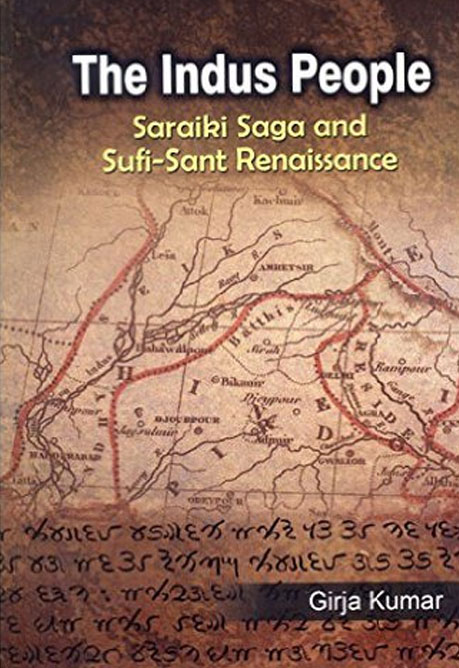
The Indus People
Author: Girja Kumar
ISBN: 9789380828855
Binding: HB
Price: 995 Rs.
About the Book
The banks of the Sindhu river, and the other northern river basins, were the theatre of the Mahabharata war and the cradle of the Indus Valley Civilisation. These are also the lands where languages and lyricism flourished. In this cultural melting pot evolved many a religion and diverse cults, jogis and sufis, Sikhs and Shias.
Girija Kumar's seminal work, The Indus People : Saraiki Saga and Sufi-Sant Renaissance deals with a mozaic of myths and migrations, thoughts and beliefs, cultural practices and castes, and brings to his readers a memorable work that leaves scope for further investigations into the roots of northern India's peoples and their poetry. It is a book of relevance to scholars of indology, history and sociology, and is of equal interest to the student of military history and mythology; it is a book for the subcontinent- watcher who want to know where India and Pakistan are coming from, and how their present reflect their past.
About the Author
Born in 1925 at Dera Ghazi Khan (Pakistan), Girja Kumar is a veteran research scholar. The man behind the Sapru House library, he has held many important positions including Chairman of the Delhi Library Board (1985-86) and President of the Indian Library Association (1983-85). He was Associate, Oriental Division, Library of Congress, Washington DC during 1954-55. He retired as chief librarian of the Jawaharlal Nehru University library in 1985. His world has been a world of books.
While he wrote books on censorship and education, he always contemplated producing a book on the greatest cult figure of modem times – Mahatma Gandhi. Brahmacharya, Gandhi and His Women Associates is based on extensive research and quotes of the main players while delineating the Mahatma's relationship with his women associates. The present book, in that sense, is a biography within a biography.
555
Copyright 2022 VitastaPublishing. All rights Reserved Designed by CrissCross Solutions LLP.





